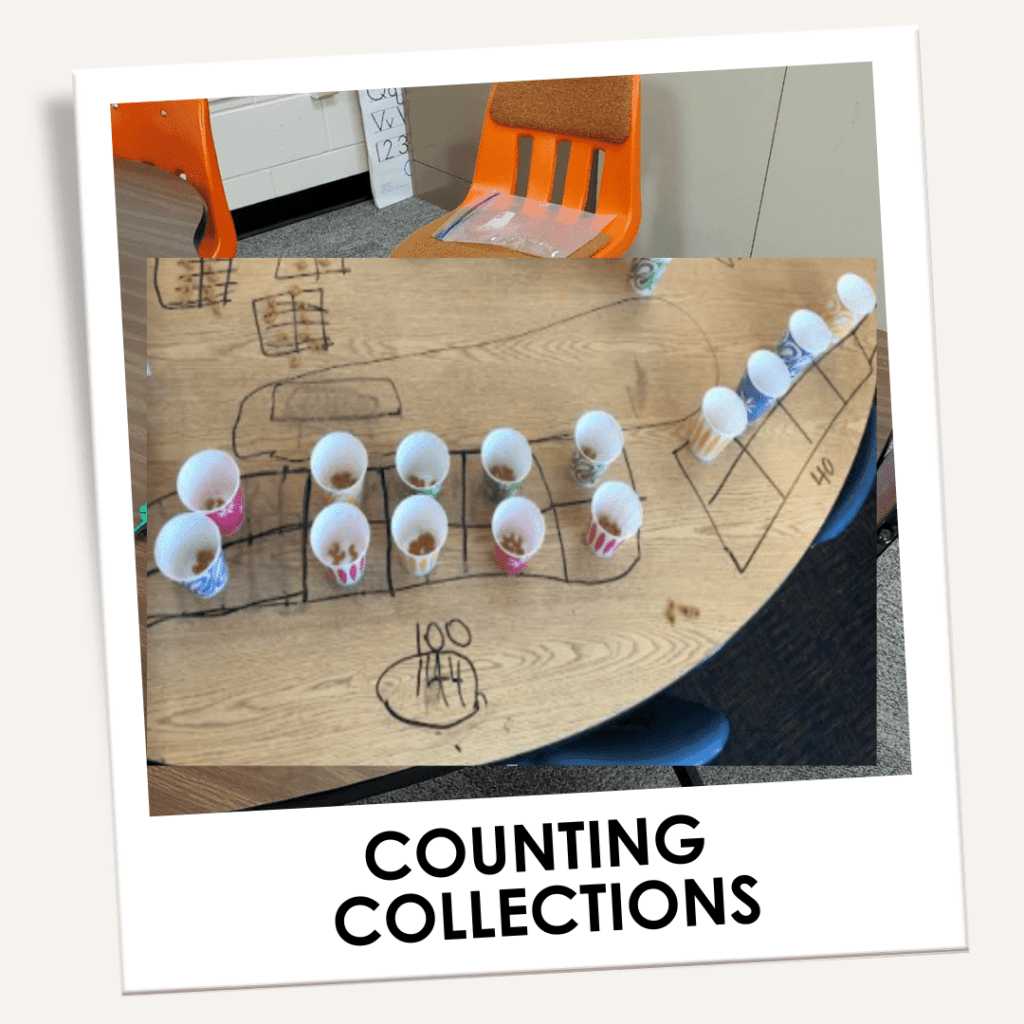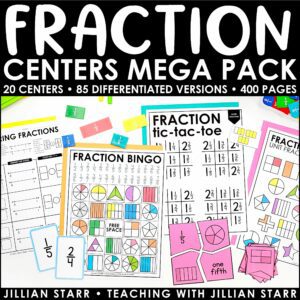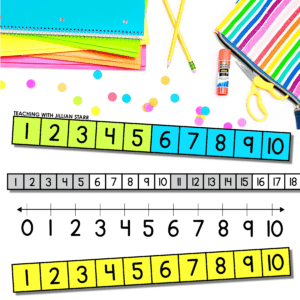
When we think about counting, what comes to mind first: Reciting a series of numbers or physically counting objects? Counting is frequently thought of as learning to say a sequence of numbers. However, students’ ability to recite numbers in order is often more indicative of their ability to memorize than anything else. Counting out loud cannot be the sole focus of learning to count, as it is only one component of the counting process.
Students need concrete experiences counting objects to understand that each number in the counting sequence is assigned to each item (referred to as 1-1 correspondence) and that the final number in the counting sequence represents the total amount of objects (known as cardinality).
Counting is typically viewed as a skill primarily reserved for preschool, kindergarten, and first grade. It’s true that counting is an important focus at these grade levels, but counting tasks can, and should, continue indefinitely. But what does that look like?
Counting Objects in Collections is my favorite way to incorporate counting in any math classroom. A low-floor, high-ceiling task, Counting Objects in Collections can be done in partners or small groups and seamlessly incorporate a variety of math concepts.
WHAT IS COUNTING OBJECTS IN COLLECTIONS?

Highly Engaging
Just like the name states, Counting Objects in Collections are collections of items that students count. Students are asked to figure out how many items are in their collection and draw a representation that shows how they counted. The mystery of “How many?” creates a sense of excitement and intrigue. The use of concrete items and open-ended directions also make Counting Objects in Collections highly engaging.
Low Floor, High Ceiling
Counting Objects in Collections is accessible to all students through multiple entry points. We do not provide a predetermined way for students to count the collections, and there are many solution pathways for students to take. The exploratory nature of Counting Objects in Collections allows students to take risks, test their ideas, and take their learning to deeper levels.
Focused on the Process (Not the Answer)
While students are motivated to find out how many objects are in their collection, this is not our main focus. We are interested in the process. How do they get started? What counting strategies do students have? Are they organizing their collection in an efficient way? What do students do when they get stuck? Is their answer reasonable? These questions, along with many others, drive the integral discussion that occurs alongside this task.
Counting Objects in Collections allows a glimpse into students’ thinking about counting strategies, including their efficiency and organization. Additionally, Counting Objects in Collections can provide opportunities for students to develop their understanding of concepts such as:
- stable order
- 1-1 correspondence
- cardinality
- conservation
- estimation
- subitizing
- place value
- skip counting
- numeric operations
- and MORE!
With Counting Objects in Collections, these concepts are explored simultaneously instead of in isolation.
IMPLEMENTING COUNTING OBJECTS IN COLLECTIONS
Preparing the Collections
You probably already have items for Counting Objects in Collections. Check your classroom cabinets, the teachers’ lounge, your pantry, etc. You just need items that you have multiple of, and we all know teachers are notorious for collecting things! Here are some ideas to consider:

Decide a reasonable number of items you would like your students to count. It is not important for you to know ahead of time exactly how many items are in each collection because we don’t want to focus on if students got the EXACT right answer. What if one bean fell on the floor? What if you miscounted? We don’t want to know the exact total because we don’t want to accidentally make that the focus when students are done counting.
Create enough collections for students to work in pairs or small groups. Counting Objects Collections can be done independently, but they are best as a collaborative task.
There is no “right way” to store your collections. I like to designate a whole shelf with bins of items for Counting Objects in Collections. When it comes time to make collections, I approximate the number of items I want students to count and put them in resealable plastic bags. Then when we are finished, I empty the bags back into the bins.
Directions
I like to begin by asking students what the word “collection” means. I ask them to name something that they collect or want to collect. I then ask students what it means to count. I explain that today they are going to figure out how many I have in each of my collections.

Pass out the collections and recording pages [CLICK HERE for the Counting Objects in Collections FREE PDF]. Ask students to look at their collection and estimate how many they think are in the collection and record that number on their recording page. They do not need to have to same estimation as their partner(s), but they do need to be able to justify WHY they chose that number.
Next, I ask students to work with their partner(s) to count the items in a way that makes sense to them. I explain that when they are done, they should leave the items arranged however they counted them, and draw a picture of what that looks like. I intentionally leave the directions open-ended because I want to see what students come up with. I do not want to limit their thinking, so I don’t tell them HOW to count or draw the items.
During the Task
I walk around, watch, observe, listen, and ask questions. As challenging as it is, I try to do as little talking as possible because I don’t want to lead students down a particular path.
When students say they are done, I typically ask them to explain how they counted. When students end with a big pile and say something along the lines of, “I just counted them!”, I challenge them by asking what would happen if they needed to check their work – would they have to start over? I encourage them to think of another way they could organize the items so that they (or someone else) could check their work easily and really SEE how they counted.
Extension for Counting Objects
Not all groups will finish at the same time. Here are some ideas for what students can do when they are done:
- Do the count again – this time in a different way and see if they still get the same answer.
- Look at other students’ work. Have groups show and explain what they did and why. This gives students practice with communicating their ideas and helps them learn from each other.
- Write an equation that represents how they found the number of items in their collection.
Discussion after Counting Objects

This is a pivotal step and should not be skipped. Ask students to leave their collections arranged in how they counted them so that you can examine them together. This is a great opportunity to highlight efficient and effective counting strategies. These strategies might include:
- Arranging items in a line (easier to count 1-1)
- Arranging items like a five-frame or ten-frame (allows for subitizing)
- Arranging items in same-sized groups (allows for skip counting)
- Arranging items in an array (allows for skip counting)
Suggestions for discussion prompts and questions:
- Compare your estimation to the total number of items in your collection. What do you notice? Was your estimation reasonable? How do you know?
- How did you count your items? Why did you choose to count them this way?
- Explain how you drew your collection. How does your drawing show the way you counted? You can take this opportunity for some students to show their drawings and discuss how the drawings show the way the students counted. Students might use other images to represent the items, such as tallies, dots, etc.
- What other ways could you have counted your collection?
- What tools could we use to help organize our counting?
- What might you do differently next time? Why?
Stay tuned! In our next post, we’ll talk about how to continue using Counting Objects in Collections after you have done them a few times. Until then, do you have other ideas for incorporating Counting Objects in Collections in your classroom? I would love to hear about your experiences! Please leave a comment below.
HAPPY COUNTING!











Love! Love! Love!